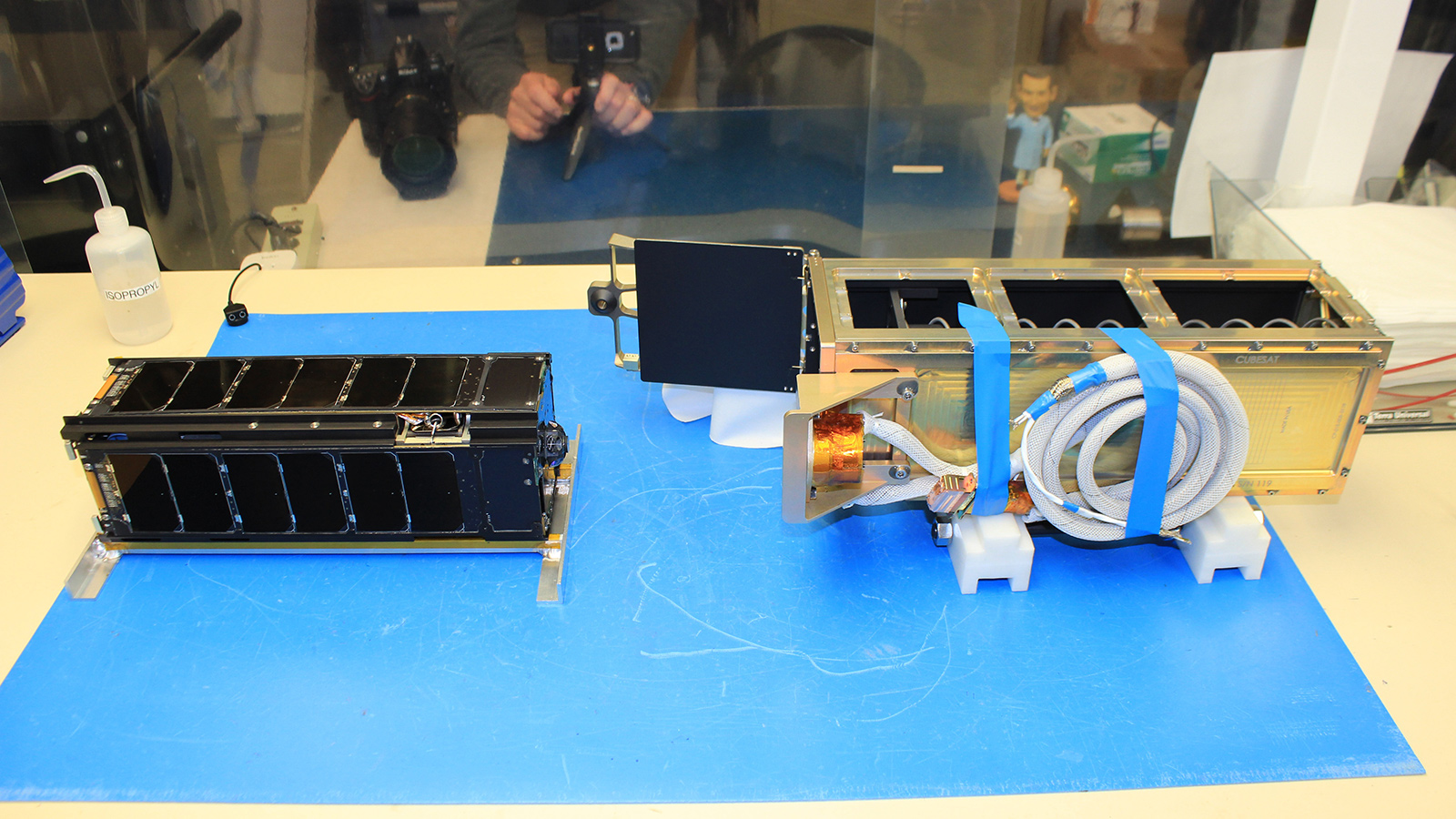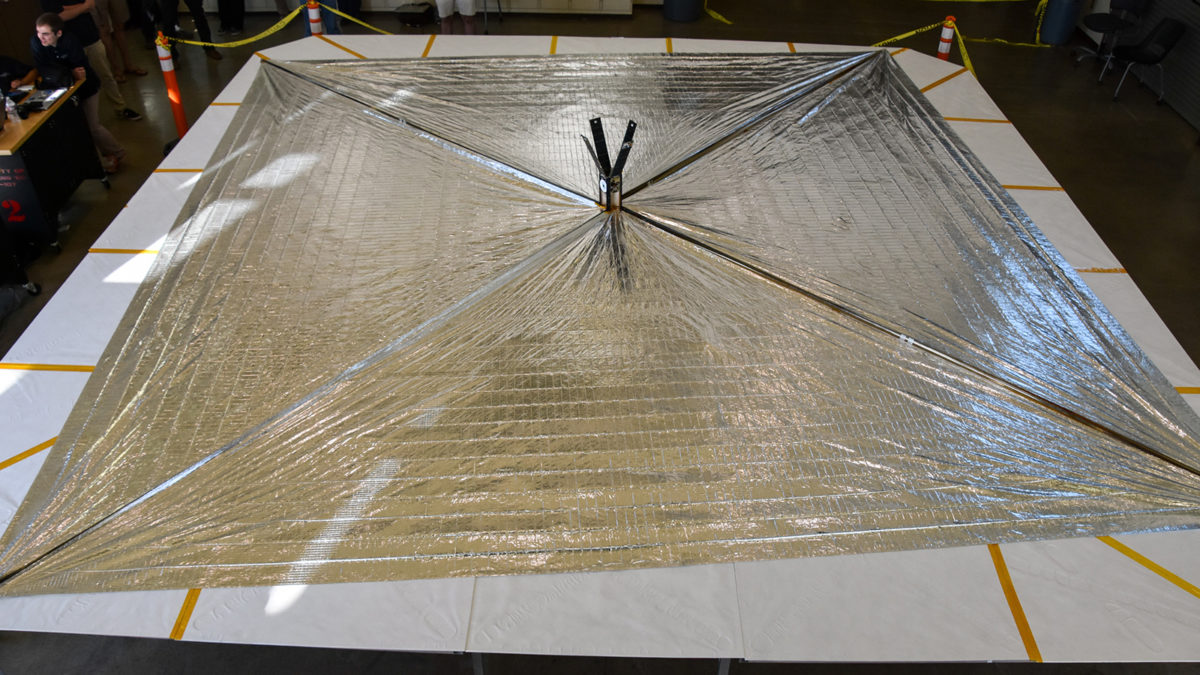Planetary Society’s LightSail unfurled
By Cat Hofacker|July 19, 2019
Find out if you can see it in your area
UPDATE: The LightSail 2 mission team deployed the solar sail. As of 6:30 p.m. EDT Tuesday, LightSail completed one orbit in solar sailing mode and all systems were functioning, according to The Planetary Society.
The Planetary Society is about to command a Mylar sail to unfurl from a cubesat the size of a loaf of bread, and some lucky space watchers will be able to see the sail from the ground as the sunlight reflects off it.
Deployment of the sail from LightSail 2 is tentatively scheduled for 2:22 p.m. EDT Tuesday. The deployment will be streamed here. Viewers can also check the project’s online mission control dashboard for updates, as well as see when the cubesat could be passing over their locations.
The Planetary Society, a California nonprofit that advocates for space exploration, launched LightSail 2 to prove that a spacecraft can be propelled by photons from the sun striking its sails. LightSail 1 flew in 2015 and demonstrated that the deployment mechanism worked properly. That version was not meant to propel the spacecraft.
Once LightSail 2’s sail status goes from stowed to deployed, it will be visible during early evening and predawn hours for some observers over the next year in a band between 42 degrees north latitude and 42 degrees south latitude. In North America, that means locations south of Chicago and New York. Nearly all of South America will be in the band, the exception being southern Argentina and Chile. Northern Europe and Russia are not in the band, but southern Europe is. Africa and Australia are entirely in the band.
LightSail’s visibility for those in that band depends on its orientation relative to viewers as it crosses overhead.
“If it’s edge on, people are not going to see it,” says Bruce Betts, chief scientist at The Planetary Society and LightSail 2 program manager. On the other hand, if the sail is in a “specular,” or mirror-like, position relative to the observer, “it can be extremely bright. Brighter than the brightest star.”
The Planetary Society has been preparing for sail deployment since LightSail 2 was launched atop a SpaceX Falcon Heavy rocket with 23 other satellites in late June. Once the cubesat reached a 720-kilometer orbit, the project team began monitoring the Attitude Determination and Control System, or ADCS, hardware that will orient the sail to catch the sun’s rays and propel LightSail forward.
“We don’t want to deploy the sail until we feel we have an excellent understanding of the ADCS system, so it’s also a matter of gathering data for a few orbits to make sure it’s doing what we expect it to do,” Betts says.
Deployment will start with a computer command from mission control in San Luis Obispo, California. A motor unreels four cobalt booms stowed inside LightSail’s storage compartment. The 4-meter-long booms pull out triangular sails that come together to form a single sail measuring 32 square meters, or about the size of a boxing ring. Betts says deployment should take about three minutes.
After deployment, a momentum wheel inside the spacecraft starts spinning to keep the sail properly oriented over the course of each orbit. LightSail must turn 90 degrees twice during each orbit so that the force of the photons raises the spacecraft’s orbit by several hundred meters per day for the first month and keeps the spacecraft on course in its orbit. The cubesat will “sail” for about a year before atmospheric drag pulls it into the atmosphere to burn up from the friction.
The success of future spacecraft such as NASA’s hinges on LightSail 2 proving this method of propulsion. Set to launch on the Space Launch System rocket during the Artemis-1 uncrewed flight, NEA Scout will deploy a solar sail to propel it past near-Earth asteroids and take photographs.
But while NEA Scout is the “next step” in solar sailing, Betts says he hopes LightSail inspires other cubesat operators to explore the technology for deep-space exploration.
“Cubesats are hugely popular, including with universities flying their own spacecraft in Earth orbit, so it will hopefully enable them to be creative to hitch rides on rockets that are interplanetary and give them a way to operate in space without carrying fuel,” he says.
Related Topics
Spacecraft Propulsion





